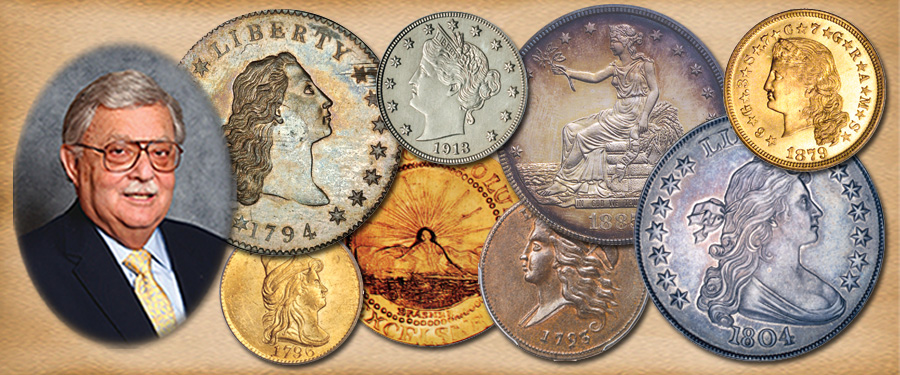
Like everything else in this world, coins are subject to the supply and demand system. If the supply of something is small to almost non-existent, even moderate demand causes a shortage. Desire for a certain item (in this case a coin) that has a limited quantity causes the price to go up, as there are not enough to go around. If a greater supply suddenly appears the price could drop, and if demand grows the value goes up. In this way, rarity and value go hand in hand. For a collector, understanding these factors might require a market search, considering economic and population reports, a grasp of the actual demand in the market place, and the desire of buyers at any given time.
One illustration of how supply and demand affect the value of a coin can be seen in the case of the 1903-O Morgan silver dollar. Although almost 4.5 million silver dollars were struck in New Orleans in 1903, by the mid 20th century, the 1903-O was considered to be the most difficult of all 1878-1921 era silver dollars to locate in high grades and only a handful of Mint State examples were known. In the 1962 edition of the Guide Book, the 1903-O Morgan dollar was listed at $1,500 in Uncirculated condition. In October of that year a few new Mint State examples had come on the market from Federal Reserve holdings, along with examples of some other rare Morgan dollars. It seems that in 1903 when these coins were struck in New Orleans there was no need for them in commerce so they were stored in vaults, with very few ever finding their way into commerce or collectors’ hands. The Treasury eventually released millions of stored silver dollars in the 1960s, including large quantities of 1903-O. Naturally, as the supply of coins went up demand was more easily met and the price dropped dramatically. In this case a coin only seemed rare because collectors did not have all the facts; in truth the 1903-O ended up being much more available than many other Morgan dollar issues.
Coin rarities happen in different ways. In some cases the Mint issues only a small number of a given coin. If the number coined is limited by precious metal supply at the time, sometimes the coins are hoarded. If the bullion value of the precious metal in the coin increases, they are sometimes melted instead of spent. Hoarding of precious metal coins for their bullion value can also be the result of dire economic events, war, or other situation that makes people distrust paper currency or non-precious metal coins.
Sometimes hoarding leads to more hoarding. When collectors hear that the “supply is limited,” often they join the rush in order to purchase rarities while they can. The value of a given coin can go up and up, once again reflecting an increase in demand unaccompanied by an increase in supply. This trend can continue upward in the case of a true rarity, but sometimes results in a “bust” if the buildup is just hype or if some other factor changes (as in the case of the 1903-O silver dollar above).
In the early days of American numismatics, some collectors were able to get special strikings or Proofs from the Mint. This was before the days of official Proof sets that were sold to collectors. These early Proofs were made in small numbers, with mintages not recorded. Thus their rarity was pretty much a given. Later, when the Mint made Proof coins and sets as part of “regular business,” mintages fluctuated, based on anticipated demand, but actual long-term availability was often a result of collector interest at the time. So a small Proof mintage might result in a “less rare” coin than a larger mintage that saw little demand. Because of this, mintage size is not the only thing that affects rarity.
As coin collecting became more popular, demand grew for many items, thus increasing their rarity. In the same way a larger number of collectors could mean that more current coins (both Proofs and circulation strike) were saved. The more affluent a collector was, the more scarce and rare coins he could acquire and these collectors preserved the coins to be passed to a later collection and so on. However, the number of collectors kept increasing, so value increased. This basic economic happening was true in many collectibles, not just coins.
Among coins made for circulation, mintages were often based on the needs of commerce. In some cases the needs of commerce varied in different parts of the country, affecting the quantities made in the various U.S. mints around the country. Sometimes coins from one mint would become worn through use, while the coins from another mint might go into storage and remain pristine. Some mints were eventually closed, limiting the availability of coins with a given mintmark. This could lead to specialization in coins from a certain mint, adding to the demand.
All these things affect rarity and sometimes it is a complicated equation. Next week I will discuss the fact that you cannot “make a rarity.”





